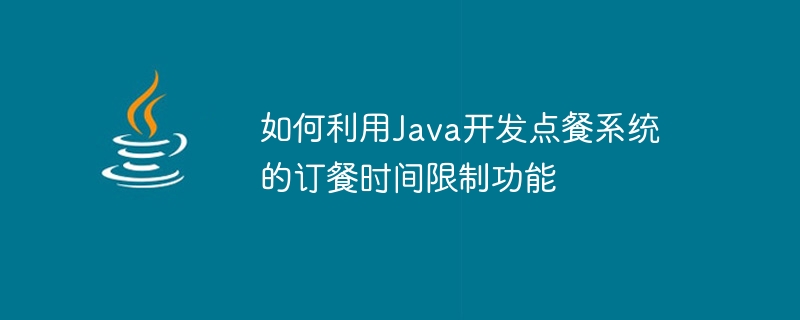

How to use Java to develop the ordering time limit function of the ordering system
With the advancement of technology and the convenience of life, more and more catering industries have begun to adopt Ordering system to provide better service. In the ordering system, a very important function is the ordering time limit. Through reasonable settings, customers' dining time can be effectively controlled and the restaurant's usage efficiency can be improved. This article will introduce how to use Java to develop the ordering time limit function of the ordering system.
1. Requirements analysis
Before starting development, we must first analyze the requirements. In the ordering system, the main requirements for ordering time limits are as follows:
2. System design
Based on demand analysis, we can design the following system architecture:
3. Database design
In the database design, we create two tables: the restaurant information table and the reservation record table. The specific table structure is as follows:
Restaurant information table (restaurant_info):
Booking record table (booking_record):
4. Back-end development
In back-end development, we need to write some API interfaces to implement the ordering time limit function. The specific interface design is as follows:
Set restaurant business hours interface (setOpeningHours):
This interface is used to set the restaurant's business hours.
Query optional reservation time period interface (getAvailableTimeSlots):
This interface is used to query the optional reservation time period, based on the restaurant's business The selectable time period is calculated from the time and reservation times already in the reservation record table.
Booking table interface (bookTable):
This interface is used to reserve a table, and the reserved time period, customer name and Phone number and other information are saved in the booking record form.
5. Front-end development
In front-end development, we need to implement the following functions:
6. Summary
Through the above system design and development, we can realize the ordering time limit function. Customers can select optional reservation time periods based on the restaurant's business hours and existing reservation records, and then make reservations through the submission reservation interface. This ordering time limit function can improve the restaurant's service efficiency and also facilitate customers to dine within a suitable time period.
Developing an ordering system is a complex task, and the content described in this article alone may not be enough to meet all needs. However, through analysis of requirements and system design, it can provide a good starting point for subsequent development work. I hope this article can be helpful to readers who want to use Java to develop the ordering time limit function of the ordering system.
The above is the detailed content of How to use Java to develop the ordering time limit function of the ordering system. For more information, please follow other related articles on the PHP Chinese website!